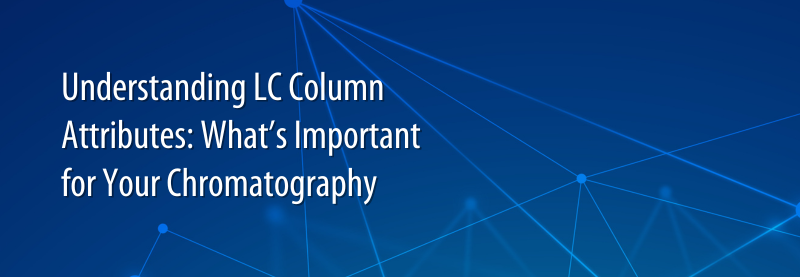Have you ever wondered how the LC column creates a separation? What attributes are important, what do they do, and how to use them to your advantage? This open-access course is designed to take you from beginner to advanced in understanding column selection and method development. It will cover the key aspects of the LC column from the base particle to the bonded phase and even the hardware.

The full "Understanding LC Column Attributes - What's Important for Your Chromatography?" open-access course includes six tracks, including:
- Column Particle technologies: the good, the bad, and the ugly
- Base particles: the key attributes that impact retention
- Solid-core particles: How do they provide higher column efficiency and lower back pressure?
- Ligands: C18, Phenyl, PFP…How to choose?
- What determines the lifetime of the column and how can you extend it?
- The perfect match: Selecting columns to maximize performance on your LC system
Once you complete all the tutorials in this module, including answering all the quiz questions correctly, you will receive a certificate of completion.
The Presenter Jonathan Turner is the Product Marketing Manager for analytical UPLC, UHPLC, and HPLC columns at Waters Corporation.
Jonathan Turner is the Product Marketing Manager for analytical UPLC, UHPLC, and HPLC columns at Waters Corporation.
He joined Waters Corporation in 2006 as a research chemist in the Chemistry Research and Development Group. From 2006 to early 2015 his role was to design, develop, and evaluate new novel stationary phases for both small molecule and large molecule separations. In 2015 Jonathan transitioned from the laboratory to the Chemistry Product Management Group; in this new role he uses his expertise in chromatographic media to help design, develop, and commercialize new modern stationary phases.

Now that you’ve learned about how particles and ligands can maximize separations, be sure to check out our other modules:
“How to improve method robustness through control of unwanted interactions”
Successful chromatographic separations are as much about preventing the interactions you don’t want, as it is about creating the interactions you need. This open-access course is designed to take you from beginner to advanced in controlling the interactions within your chromatographic separations. It will cover how to improve method robustness through the prevention of analyte loss, with improved confidence in the quality of your data.
"Size exclusion chromatography overview of the principles and techniques
to obtain reliable protein size-based-separations"
Size-Exclusion Chromatography (SEC) is a powerful technique for protein characterization that requires an understanding of the principles to be successful. In this open-access course, we will discuss the history and science of SEC, its strengths and limitations, and how to get the most from this important analytical technique. We’ll also discuss the analytical challenges with a focus on monoclonal antibody separations and the effective use of LC-based, size-exclusion chromatography to obtain reliable mAb aggregate, monomer, and fragment analyses.
“Understanding the role of SPE for cleanup of biological matrices in bioanalysis”
This module series will introduce all common types of sample preparation used in the bioanalytical laboratory space and then will focus primarily on solid-phase extraction (SPE) which yields the highest cleanliness of sample extracts. Gaining a fundamental understanding of how SPE works, what benefits SPE provides, and what SPE devices are available in the laboratory will be a main focus, from learning about reversed-phase and mixed-mode ion exchange retention mechanisms, to selecting a sorbent, device format, and processing method.

